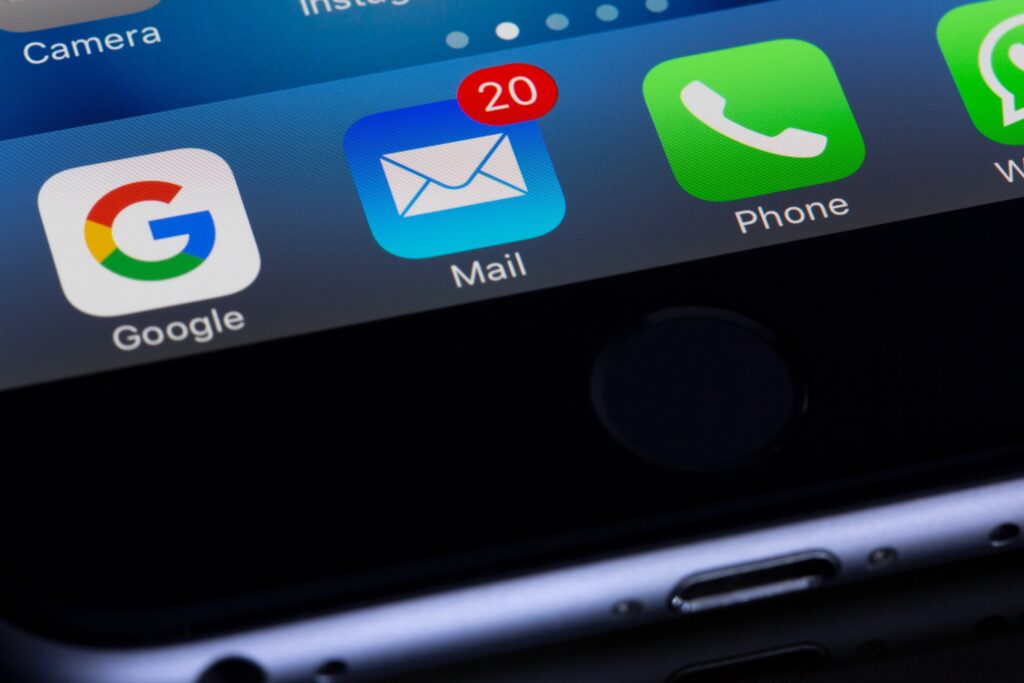Fast delivery and direct communication—that is the power of email.
Not only is email a great way to interact with your audience, but it statistically gives you the highest return on investment. Emails create a personal connection with your intended audience while stimulating the want to donate.
Email generates $36 for every $1 spent, which is an astounding 3,600% ROI.
This makes email one of the most effective options to integrate into your fundraising strategy. It also offers a way to reach people wherever they may be, through their desktop computer or on their mobile device.
Your organization has likely built a list of previous donors and potential donors interested in your cause. This is the ideal group to target for new donations through online fundraising email campaigns.
But what should you say in your email?
How do you write a great call-to-action (CTA) email that gets donors to give online?
Here are some tips on how to craft an engaging e-mail for your donors and potential donors:
Keep the Email Focused
When you’re writing a call-to-action email to raise money, keep it focused on what you’re campaigning for. Keep your messaging clear and concise. Avoid over-sharing or covering too many subjects. Keep your messaging personable in tone and straightforward in its wording. You don’t want to confuse, overwhelm, or distract your donors.
Take the Reader on a Journey
Use your email to tell a story. Make sure the story is engaging to the reader. Use your story to keep the reader focused on the goal. Here’s a formula to consider when telling your story:
- Highlight the problem that’s prompting this virtual fundraising campaign
- Explain how your non-profit will work to solve the problem
- Tell the reader how financial support will help your organization with your mission and how the donor will be helping to solve the problem through their contribution
There are three ways you can share your story. You can either be broad in your approach, specific in using an example, or a hybrid of both.
For example, a broad email could talk about homelessness and how to help. A specific example is sharing the story of a person experiencing homelessness and how the donation would help them directly. A hybrid example is combining the two approaches. This allows you to talk about a broad problem while using a specific example to better explain how the problem impacts the affected group. Whatever you chose, it’s all about making an emotional connection with the reader.

Guide the Email Audience
Tell your readers exactly what you want them to do. Be direct in that you’re looking for a financial donation. Donors will feel less uncertain if you’re clear about why you’re asking them to donate as clarity helps eliminate any confusion about why you’re asking them to donate.
Make the next steps very clear and easy to follow. Tell the reader exactly how to go about donating. Some ways to do this are:
- Include specific language asking for a donation (“We need to raise $10,000 for [insert nonprofit or charity]. Can you chip in $19 today?”
- Include at least one donate button within the call-to-action text
- Link the text referencing donations and the donate buttons to the same fundraising page
Including a button in your e-mail that reiterates your call to action clearly, and inspires the reader to act, is a great idea. Your button could say:
- “Donate Now”
- “Make a Difference”
- “Get Involved Today”
Consider Including a Donate Button and Link Placement
Emails have a significantly higher open rate when the subject line has a CTA (Call to Action). In addition to the subject line, include CTA buttons and links throughout the email text. Including multiple links is beneficial. They are not a distraction because all the links go toward the same goal and take the reader to the same donation page. By placing multiple links and buttons, you capture the reader wherever they are in the email when they decide to take the next step to donate.
Think like a donor. Make it as easy as possible to donate.
Personalize the Email
Personalized emails get better results. There are different ways to personalize, including segmenting your email list to send targeted emails to the right people and including the person’s first name when you begin an email.
Brady Josephson, a Digital Marketer with a focus on nonprofit’s research of Canadian charity emails, has shown that sending a charitable email from a person instead of an organization has led to better results. For example, the email could come from an employee, a board member, or another donor. His examples include the language of the person talking about the work the organization is doing and then asking the reader to join the writer in donating.
He also showed an experiment of making an email look more like a personal letter without organizational pictures, and this resulted in a 112.5% donation increase. He recommends writing an email with the same language you would use to talk to someone; casual, friendly, and straight to the point.
Top takeaways to consider when creating a CTA email:
- Stay focused
- Take your reader on a journey
- Be direct and concise in your messaging
- Include a donate button and related links
- Personalize the email to the reader
Kambeo is a free, all-in-one tool nonprofits can utilize to help raise money for their communities, reach new donors, and build relationships with recurring donors. Set up your free cause page today and start connecting with supporters who want to make a positive impact.



